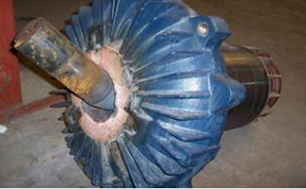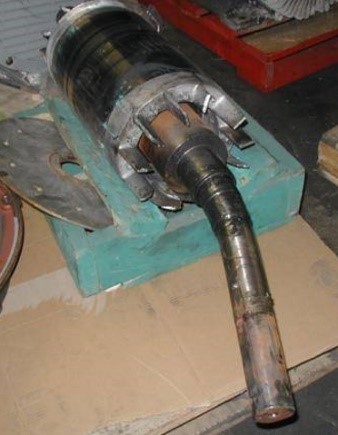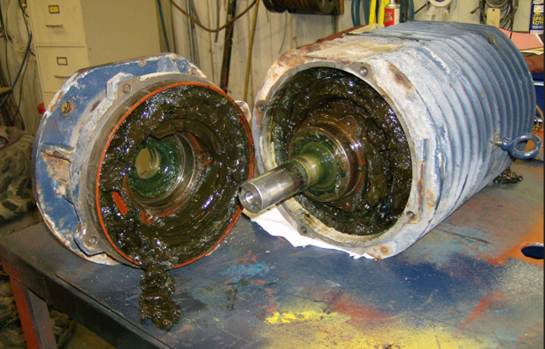
Understanding Motor Applications:A Key Step to Safety and Efficiency
Written by Jim Murphy-Product Manager Marathon Electric a WEG Group
This article is for the new and seasoned person alike in the world of electric motors and where the motors are applied. Electric motors are a fundamental part of modern technology, powering countless devices and systems across industries. Whether you're new to the field or a seasoned expert, understanding where and how these motors are applied is essential to unleashing their full potential.
The word application is defined by the Cambridge Dictionary as a way in which something can be used for a particular purpose: the design has many applications. In the case of electric motors there are many applications where motors are used. But in every case, one critical question always comes first: What is the application?
Why is understanding the applications so important?
The first and most important question to ask in the world of electric motors to all customers who request a motor is What Is the Application? Many if not all problems/issues can be avoided when we all ask it.
Not asking this one important question can cause injuries or damages. Having to change out a 56 frame is one thing, but if you have change out a 5000 frame or larger (large and heavy motors require – people, hoists, fork lifts, etc.) in this industry you will never forget asking, what is the application? – And the motor can be attached to other equipment that is in a system where a motor is applied, just a short list of negative issues caused from not asking questions:
- In the case where a nameplate has information on it:
- Does it have all a person requires to replace a motor?
- If a person replaces the motor that failed just by a motor nameplate, and does not ask what the application is, and what caused the motor to fail?
- The person not asking questions quite possibly will help cause a new motor fail as well by not asking some questions, especially Why did the previous motor fail?
Here are two examples of motor failures that can be avoided, provided there are questions asked from the beginning of purchasing a motor.


Comments for Belting Motors:
- All motor manufacturers have belt forms to provide analysis of belt systems
- The motor shaft and bearings have life values
- The motor being sold has a warranty period
- Do these two, warranty and life values, match?
- Equipment users have several methods available to choose the “right” V-Belt and the tension of the belts, use of various gauges to allow accurate monitoring of monitoring of in-service tension.
- Avoid the 3-way finger-pointing session between the operator, the motor supplier, and the belt manufacturer
- Ask questions of the customer and ask application engineering to help you. Mainly – Ask Questions

Example of way too much grease being placed into the motor’s grease cavity, too much grease is also bad. Marathon’s Installation and Maintenance Manual provides the information on regreasing by frames and by severity of use.
Additional Questions to Ask When Discussing Electric Motors
This list isn’t complete—it’s just a starting point to help you get a handle on things. While it covers some important basics, we really encourage you to think about your own situation and ask any extra questions that make sense for you. Taking that extra step will help you get a clearer picture and make the best decisions for your needs.
- What is the application?
Define it completely. For example, Crusher Duty – is it a Rock Crusher dirty dusty or another kind? Typically, roller bearings are required for these applications. How is yours connected to apparatus and will your motor require a roller bearing? What is the load placed on our shaft? We have a belt form if it’s belted that we use to determine the life of the bearings and if it will meet the typical warranty. Please fill it in and have peace of mind that your motor will not fail when turned on.
- What IP Rating is Required?
IP12, 23, 54, 55, 56 etc.
- Frame Size?
Special mechanical features, Non-NEMA mechanical features, IEC frames
- Enclosure
ODP, DPFV, TEFC, TEBC, TEAO, TENV, EPFC, EPNV. Other? Specify.
- Environment
Indoors, Outdoors, Dusty, Dirty, particles blowing, humid. Is the motor near or around chemicals? If so, name the chemicals: abrasive areas, moist or wet areas, and so on.
- Phases/Frequency/Voltage
Example: Single Phase (1PH) or Three Phase (3PH)/60HZ/230/460
- Service factor/Ambient/Altitude
1.15/standard is 40°C/standard is 3300 FT less than this okay, but greater check with motor engineering before quoting
- Efficiency Requirement
IEC uses IE3 and NEMA uses NEMA Premium/Table 12-12 If different state the value to meet.
- Starting Method
Across The Line (A.T.L.) or (D.O.L.) or Y - D open transition, Y - D closed transition, PWS single voltage. PWS dual
voltage, autotransformer, electronic control, VFD
10. Number of speeds, full load rpm
11. NEMA Design (Design A, B, C, or D)
12. Insulation Requirement:
Class F, Class H, If Class H insulation is required generally there is a minimum of three reasons:
- Long Life
- High Ambient like 65C and higher say
- is the motor being operated with a VFD, and
- Service Factor higher than typically offered, and high altitudes typically one or more reasons for Class H being required.
Looking into the Nameplate
Understanding how to read a motor nameplate is crucial, as it provides essential details like voltage, speed, and efficiency needed for proper operation and compatibility. If you feel you need a refresher, we have a comprehensive guide that breaks down the process step-by-step, making it easier to understand and apply this knowledge effectively.